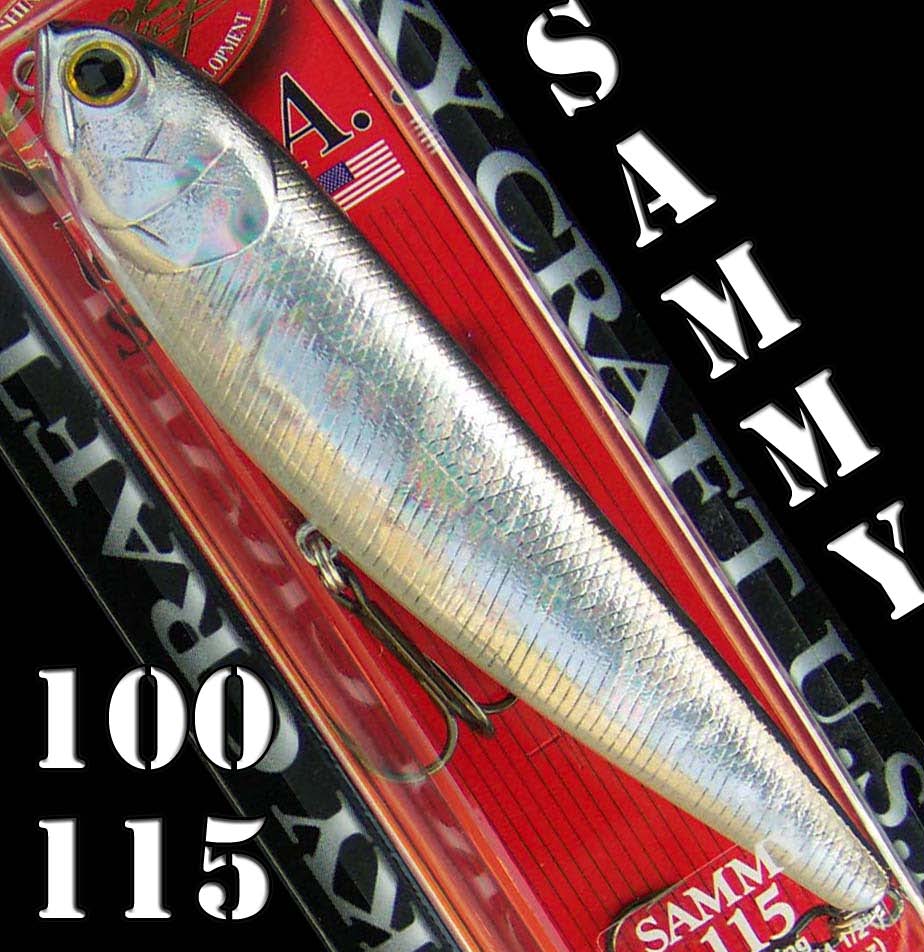
| Model | Size | Weight | Type | Depth | Factory Hooks |
| Sammy 100 | 4" / 98.5mm | 1/2 oz / 13.5g | Floating/Walking | Top | Two #4 VMC Black Nickel |
| Sammy 115 | 4-1/2" / 115mm | 5/8 oz / 18.5g | Floating/Walking | Top | Two #4 VMC Black Nickel |
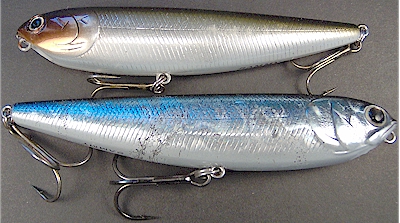
Size comparison of Sammy 100 (top) and Sammy 115
I wonder who came up with 'walking the dog'? Walking puppy or walking puppet would have been a better name because the Sammy certainly is a puppet. Like Pinocchio, the Sammy is utterly lifeless until you, the puppet master, pull its string.
When given the proper action, the Sammy will zigzag on the surface side to side like a wounded baitfish.
When I cast out, I want the Sammy to make a big splash as it hits the water. I want to trick bass into thinking this big splash was made by another bass that just smacked a shad on the surface. I want bass to hear a big splash, think it was another bass blasting a meal, and see my injured Sammy limping away from the scene of the crime! When bass think other bass are feeding, they get very competitive and want a piece of the Sammy for themselves before other bass get it. They get greedy and lose caution. So I cast out, let it splash loudly like a feeding bass and immediately start the zigzag retrieve with no hesitation. Bass rocket up and belt it!
When bass hit a walking bait, they often miss it. I do not think the bass can clearly see it because of all the surface disturbance. In fact, I have seen many bass swimming along underneath and behind walking baits. Apparently, the bass are trying to get a clear look at it. I do not think they can see it well. Often, the bass will be zigzagging its own head from side to side, trying to get a better look at a walking bait from the left and from the right. Have you ever seen bass do this? They will follow walking baits for a while, trying to get a clear view of them.
When they've seen enough, the bass will boil up behind it and blast a walking bait. Never stop giving it the zigzag action with the rod tip even when a bass is cartwheeling all over it. As I say, they often miss it. If you keep zigzagging, they will belt you two, three, four times until you finally feel solid weight on the rod tip...and the bass is on!
Because bass have such a problem hitting a walking bait, I like to help them out by putting the biggest hooks I can possibly fit on my walking baits without ruining the action. With the Sammy, I will put size #2 hooks on the 3/4 oz Sammy 115. I put a pair of heavier, longer shank #4 hooks on the 1/2 oz Sammy 100.
Even with bigger hooks on them, bass will still miss walking baits when they swipe at them. With the Sammy, the heavier hooks slow down the frantic, splashy action a little. The heavier hooks give the Sammy a bit slower, more stable zigzag that leaves a vee wake on the surface. I think this slower action helps bass hit them more accurately and the larger hooks are harder to avoid.
Sammy Actions
With the bigger hooks, I give action to the Sammy in three ways:
-
I give very short movements of only 3 to 4 inches to the rod tip, and I turn the reel handle slowly so the Sammy comes across the surface at a medium pace. The only thing I like to see is one inch of the Sammy's nose twitching back and forth, which leaves a rippling vee trail wake behind it. The rest of the body stays underwater. This is the retrieve I use in open water away from shore or cover. I use this retrieve when active fish can not be seen breaking the surface. It is the most life-like retrieve of all, but takes more time because it is moderately slow. This is a finesse fishing presentation, and can really pull fish up from deep water when nothing else will.
-
When active bass can be seen breaking the surface here and there, you do not need to go so slow. I do the same as above (move the rod tip 3 to 4 inches) but I turn the reel handle faster so the Sammy zigzags across the surface at a fast pace. This fast pace seems better for fish that are up on top competing with each other for food. Still, I usually only want to see the nose of the Sammy come out of the water on this faster retrieve for active fish, and the heavier hooks help keep the rest of the body lower in the water. Instead of or in addition to heavier hooks, you can also stick a couple of Storm SuspenDots or SuspenStrip adhesive weights under the tail to make it lay lower.
-
When I fish up against shoreline or cover, I do something different. In this case, I use longer, slower movement of the rod tip, and I want to see the entire side of the Sammy come out of the water on every zig or zag. I try to make this happen in slow motion so the Sammy kind of hangs there between each zig or zag. The whole Sammy should move side to side - not just the nose. It looks very much like a dying fish. This slow, sweeping tactic keeps the Sammy hanging next to cover where bass are hiding. It draws them out. Almost pausing in between feeble flips and dying flops is fine. Retrieves #1 and #2 above would go past shoreline cover too quickly - not hang there long enough to infuriate bass to come out of their hiding holes deep inside the cover like tactic #3.
When to Use Sammy 100 Versus Sammy 115
The Sammy 100 is by far the most popular Sammy size across the USA. The 100 out-sells other Sammy sizes by a wide margin. Indeed, the Sammy 100 is one of the most popular of all Lucky Craft lures of any kind. So if you were going to rely on or wanted to try only one size of Sammy, the 100 is certainly it.
The bigger Sammy 115 is a distant second in terms of popularity. However, the 115 is my own personal best size of Sammy. There are two smaller (65 and 85) and one larger (128) sizes of Sammy also. All do work well, but the 65, 85 and 128 are not as popular as the 100 nor even the distant second-best seller, the Sammy 115.
In terms of my own personal favorite size, it is the Sammy 115. It casts extremely well. When replaced with #2 hooks, the Sammy 115 becomes very special to fish in deeper, calm water using a slow, gentle walk-the-dog action that makes the nose barely twitch without splashing as described above.
I favor the bigger Sammy 115 for covering deep water on big lakes and large reservoirs.
I downsize to the Sammy 100 in shallower water (where fish can be spookier), on smaller bodies of water, or whenever the fish show no interest in the 115, that's when I'll break out the Sammy 100.
Lucky Craft Sammy 100
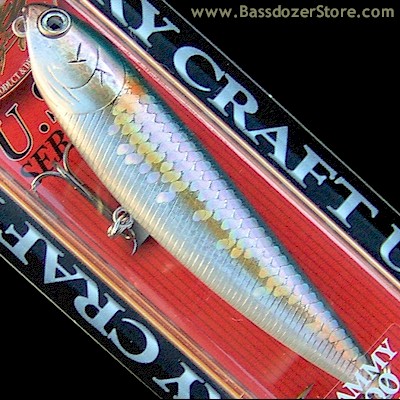
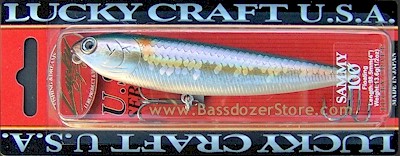
Lucky Craft Sammy 100 ~ Topwater ~ American Shad
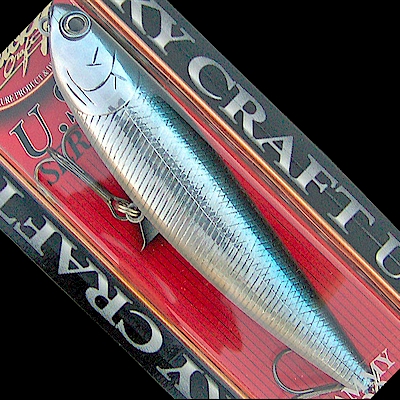
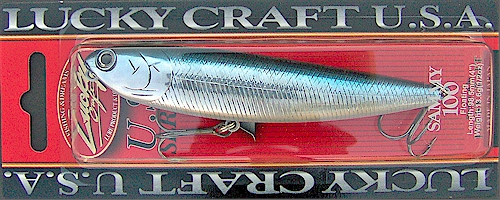
Lucky Craft Sammy 100 ~ Topwater ~ Aurora Black

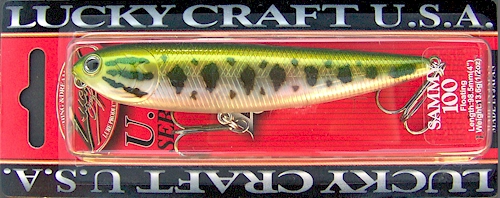
Lucky Craft Sammy 100 ~ Topwater ~ Baby Bass
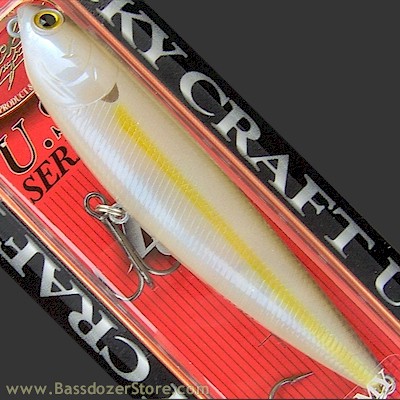
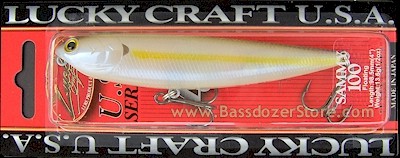
Lucky Craft Sammy 100 ~ Topwater ~ Chartreuse Shad
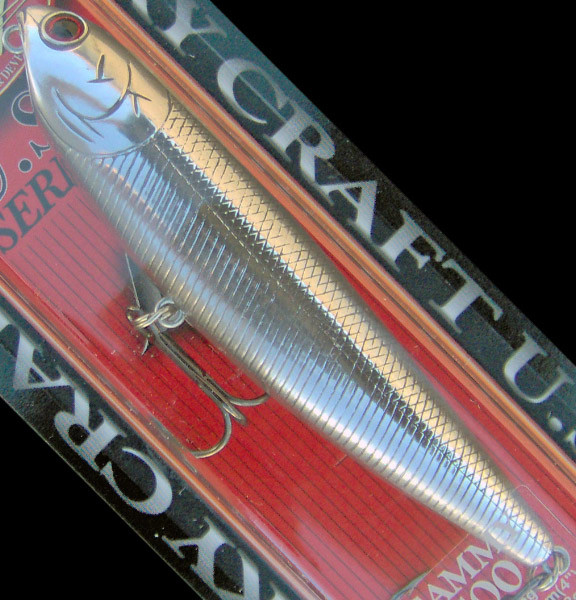
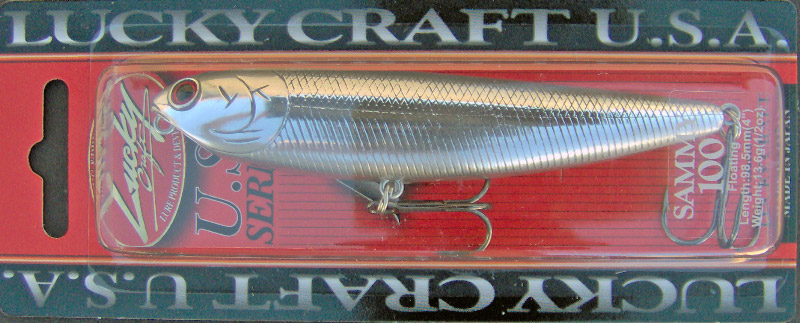
Lucky Craft Sammy 100 ~ Topwater ~ Chrome
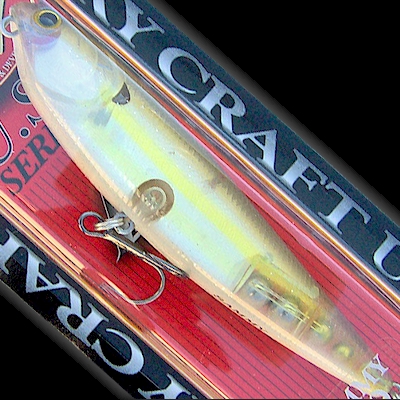
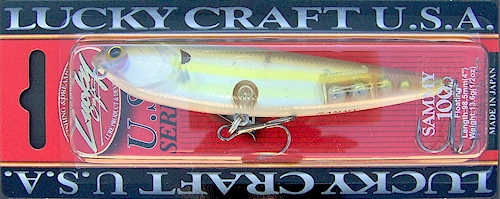
Lucky Craft Sammy 100 ~ Topwater ~ Ghost Chartreuse Shad
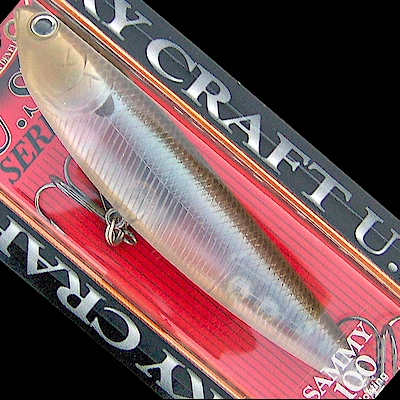
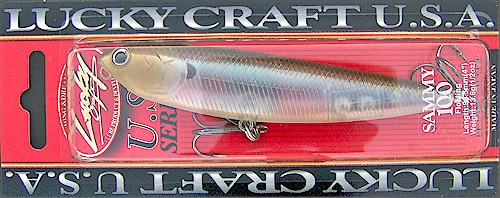
Lucky Craft Sammy 100 ~ Topwater ~ Ghost Minnow
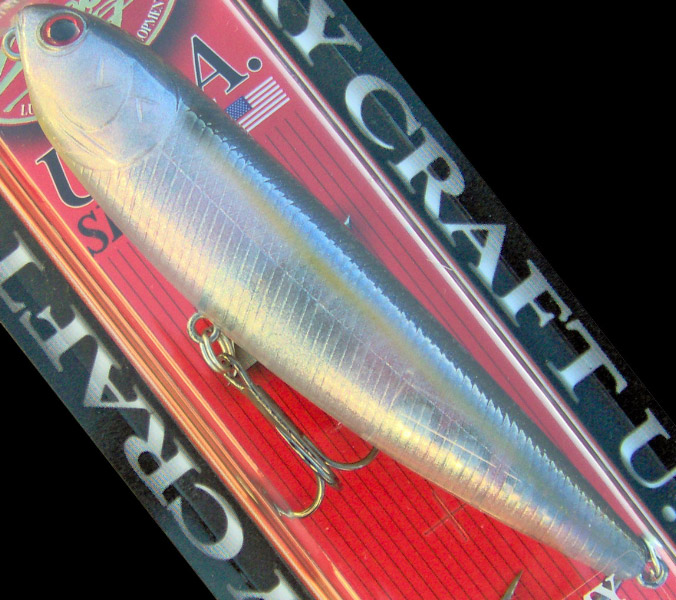
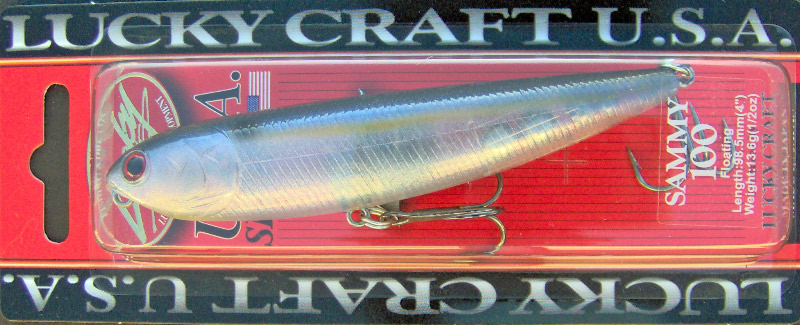
Lucky Craft Sammy 100 ~ Topwater ~ Ghost Threadfin Shad
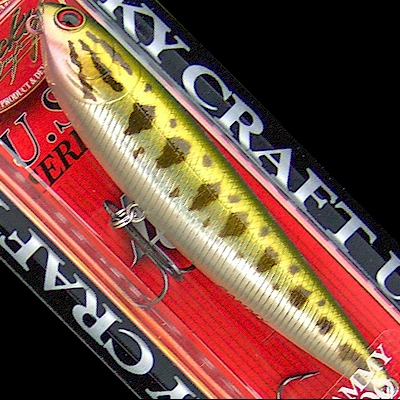
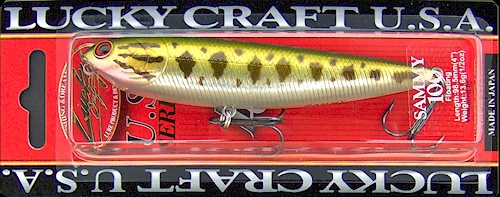
Lucky Craft Sammy 100 ~ Topwater ~ Northern Largemouth Bass

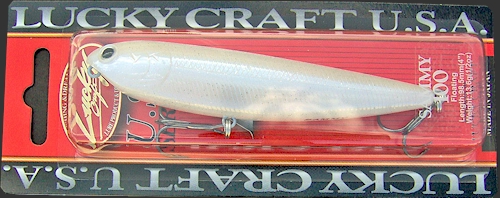
Lucky Craft Sammy 100 ~ Topwater ~ Pearl Flake White
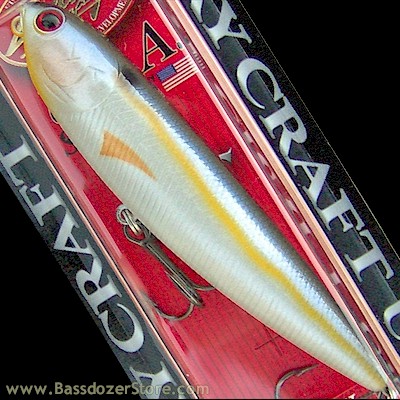
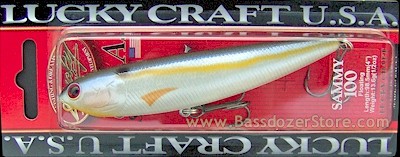
Lucky Craft Sammy 100 ~ Topwater ~ Pearl Threadfin Shad
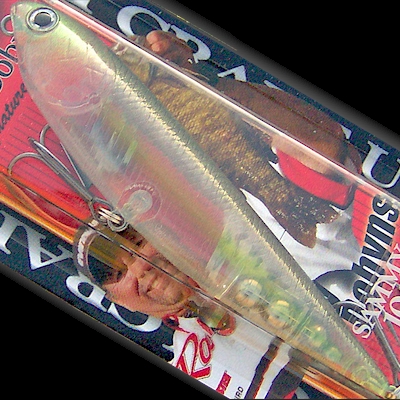
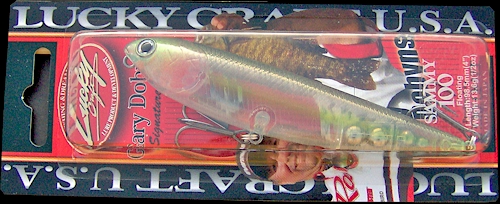
Lucky Craft Sammy 100 ~ Topwater ~ Phantom Chartreuse Shad
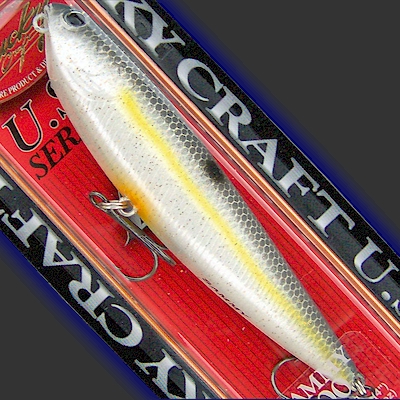
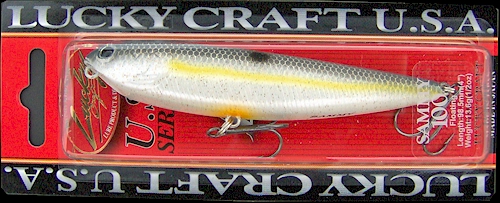
Lucky Craft Sammy 100 ~ Topwater ~ Sexy Chartreuse Shad
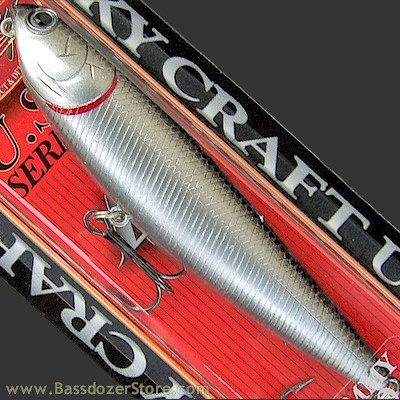
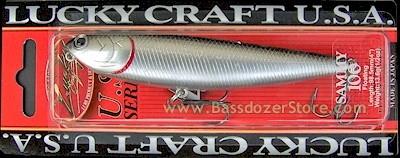
Lucky Craft Sammy 100 ~ Topwater ~ Shiner
Lucky Craft Sammy 115
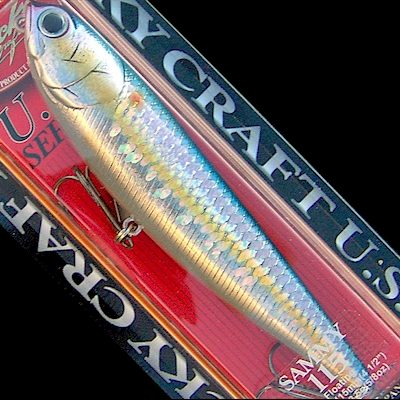
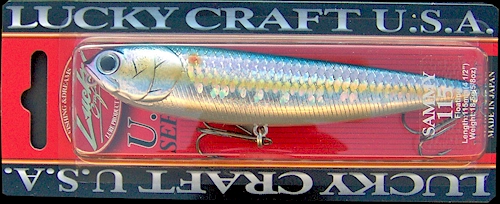
Lucky Craft Sammy 115 ~ Topwater ~ American Shad
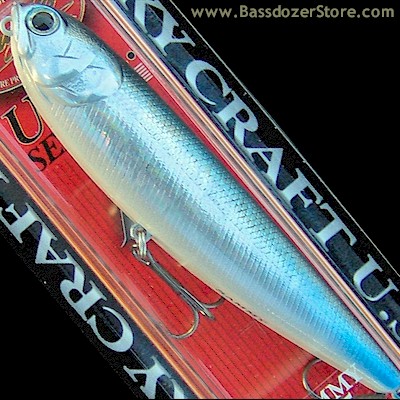

Lucky Craft Sammy 115 ~ Topwater ~ Aurora Black 2
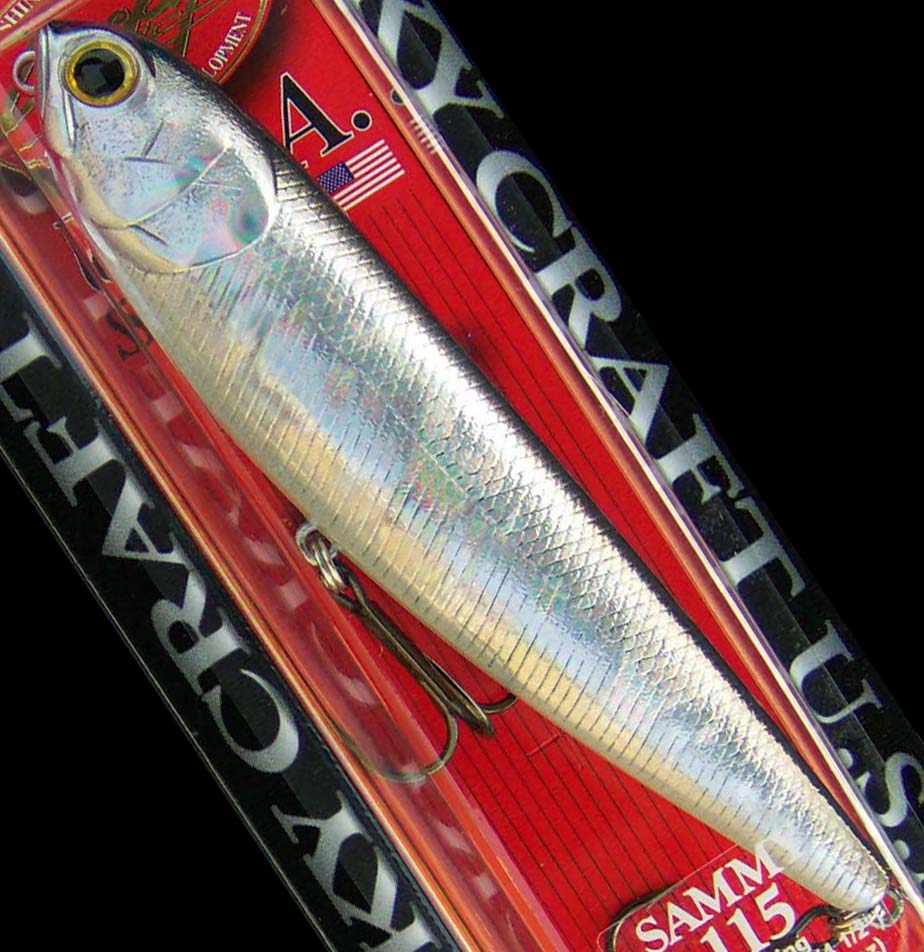
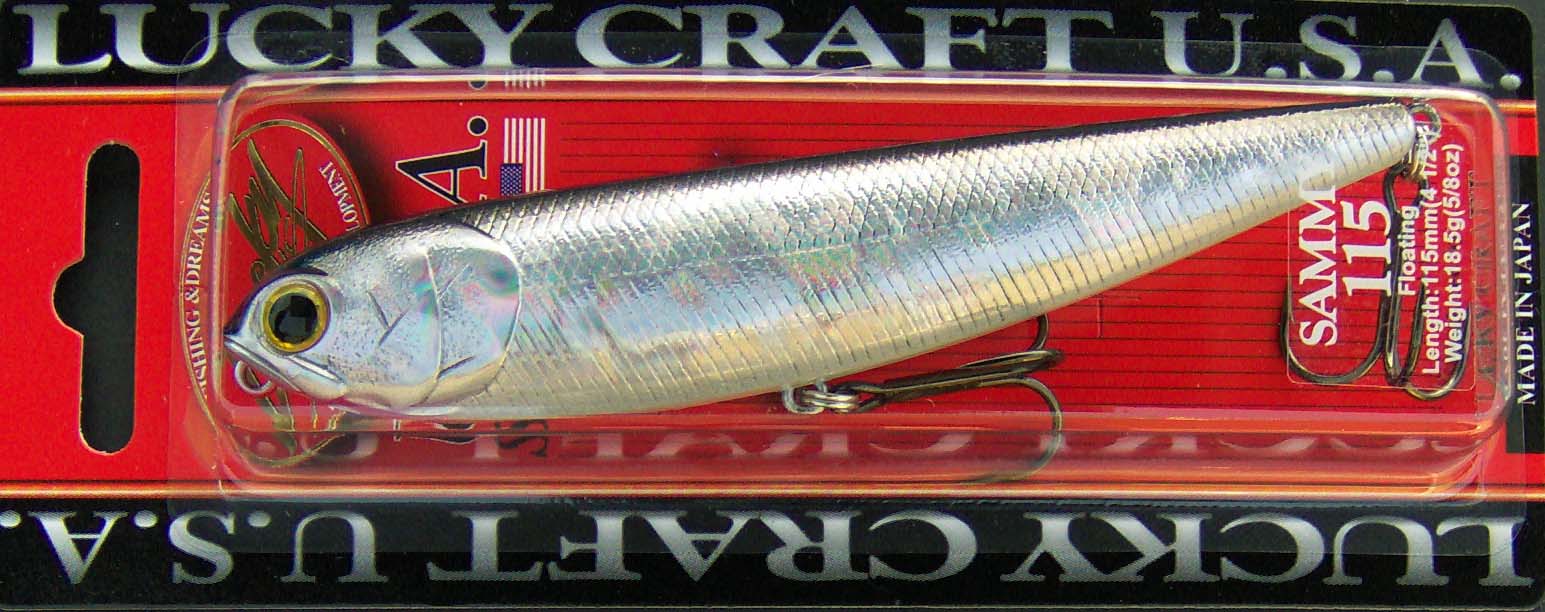
Lucky Craft Sammy 115 ~ Topwater ~ Baitfish Silver
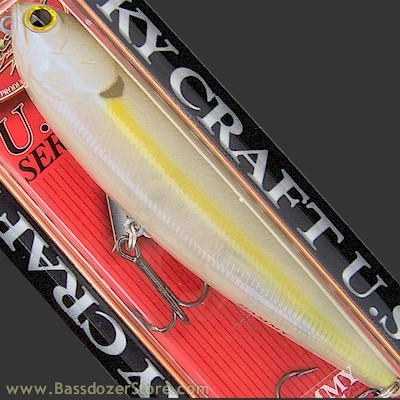
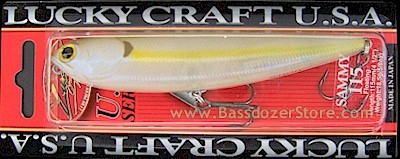
Lucky Craft Sammy 115 ~ Topwater ~ Chartreuse Shad
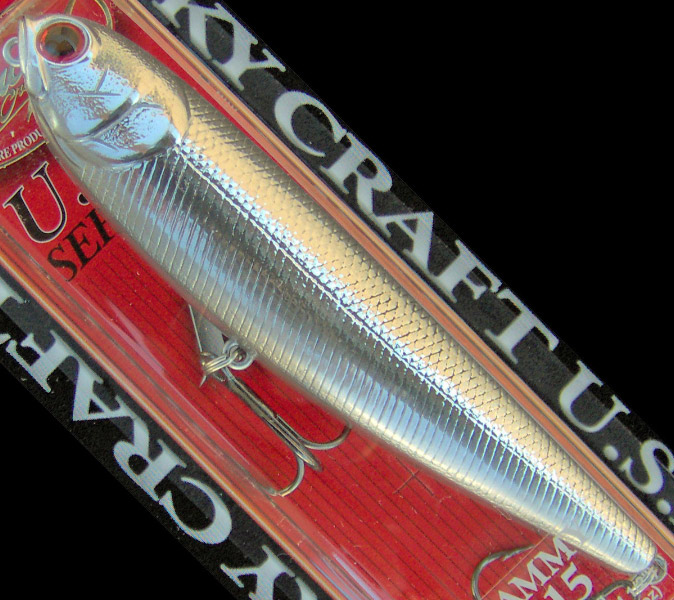
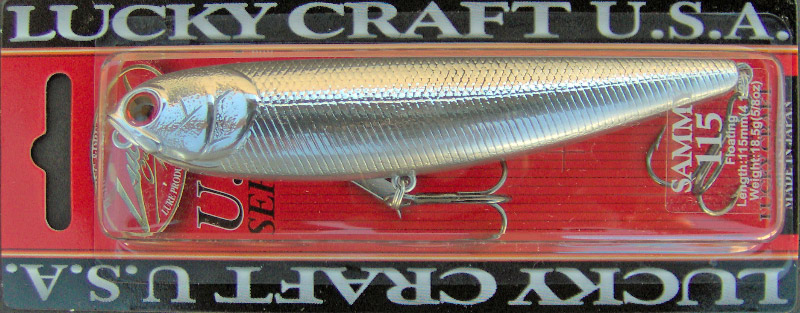
Lucky Craft Sammy 115 ~ Topwater ~ Chrome

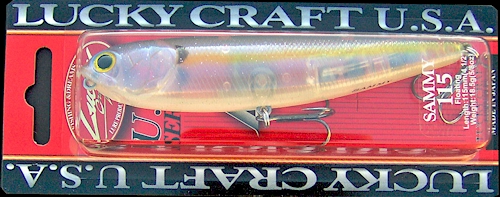
Lucky Craft Sammy 115 ~ Topwater ~ Ghost Chartreuse Shad
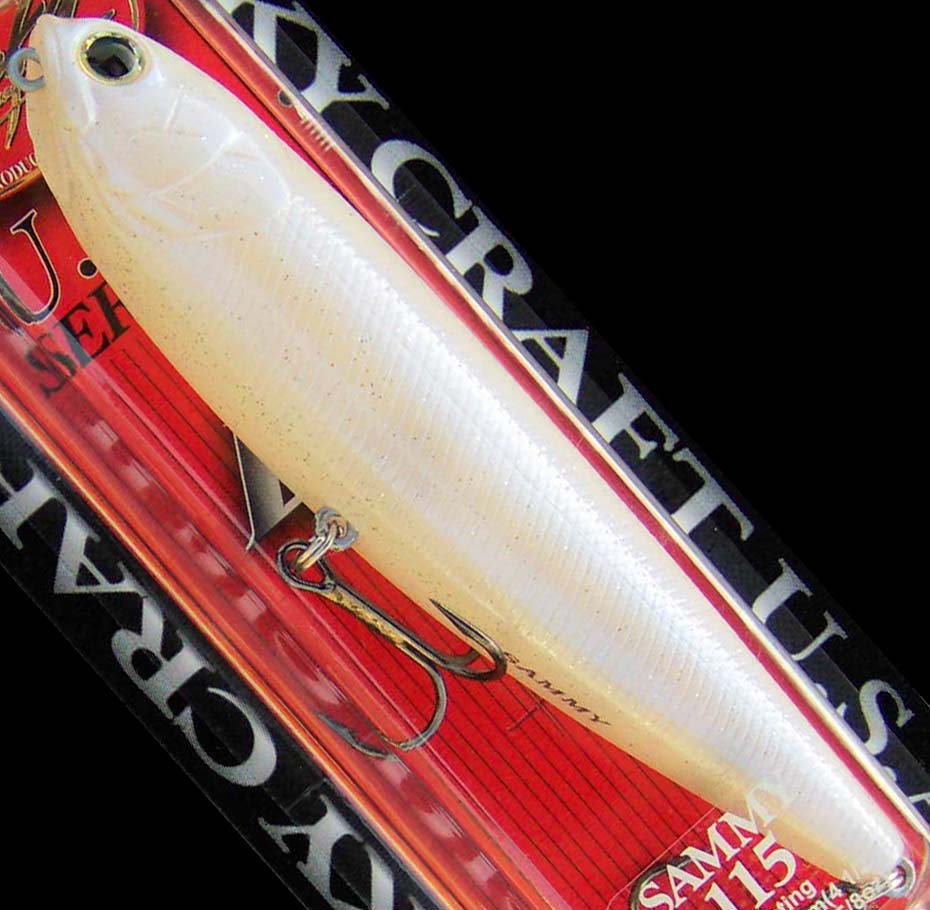
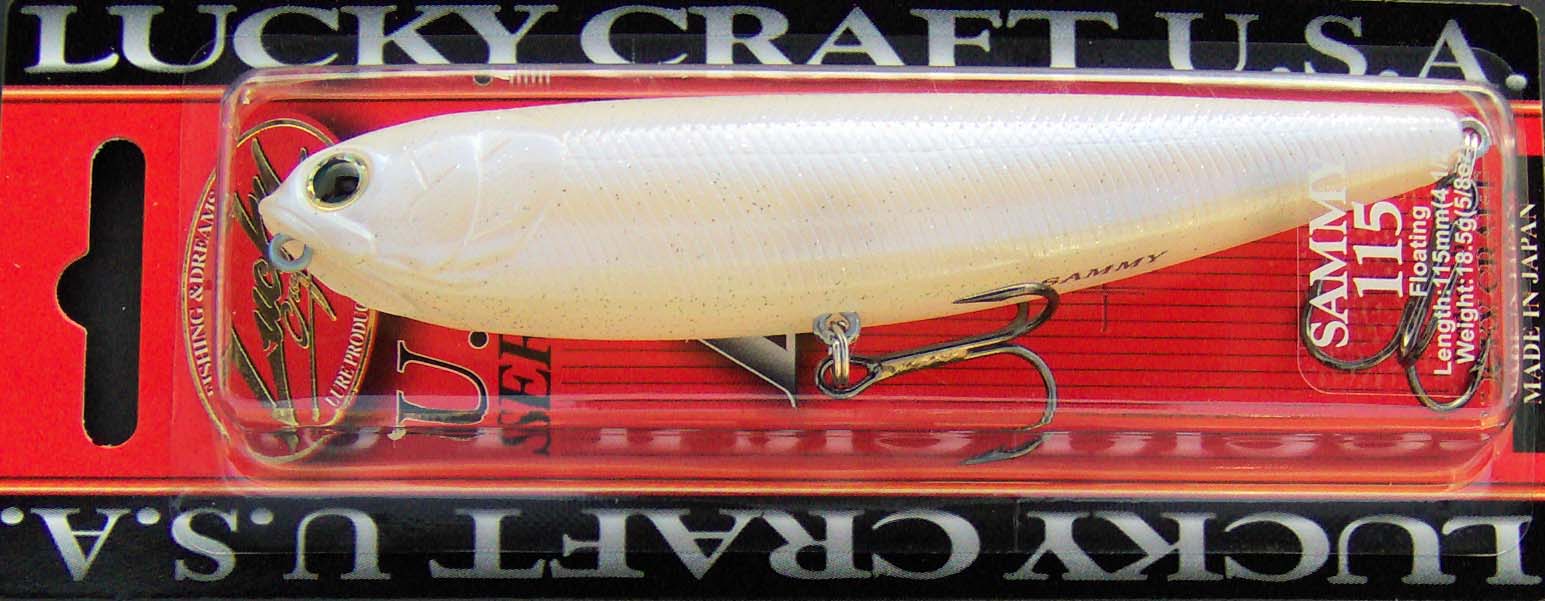
Lucky Craft Sammy 115 ~ Topwater ~ Pearl Flake White
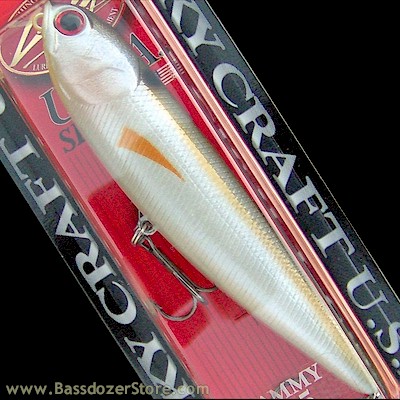
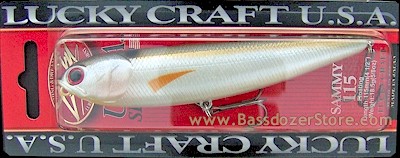
Lucky Craft Sammy 115 ~ Topwater ~ Pearl Threadfin Shad
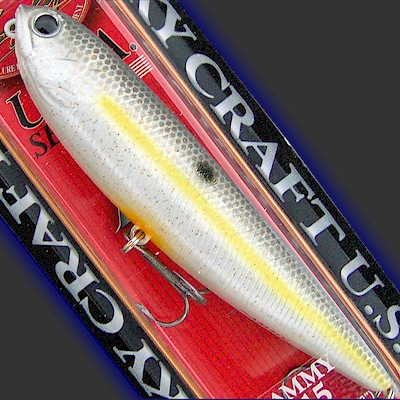
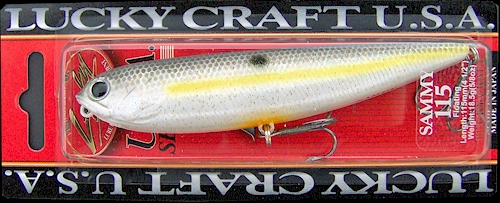
Lucky Craft Sammy 115 ~ Topwater ~ Sexy Chartreuse Shad
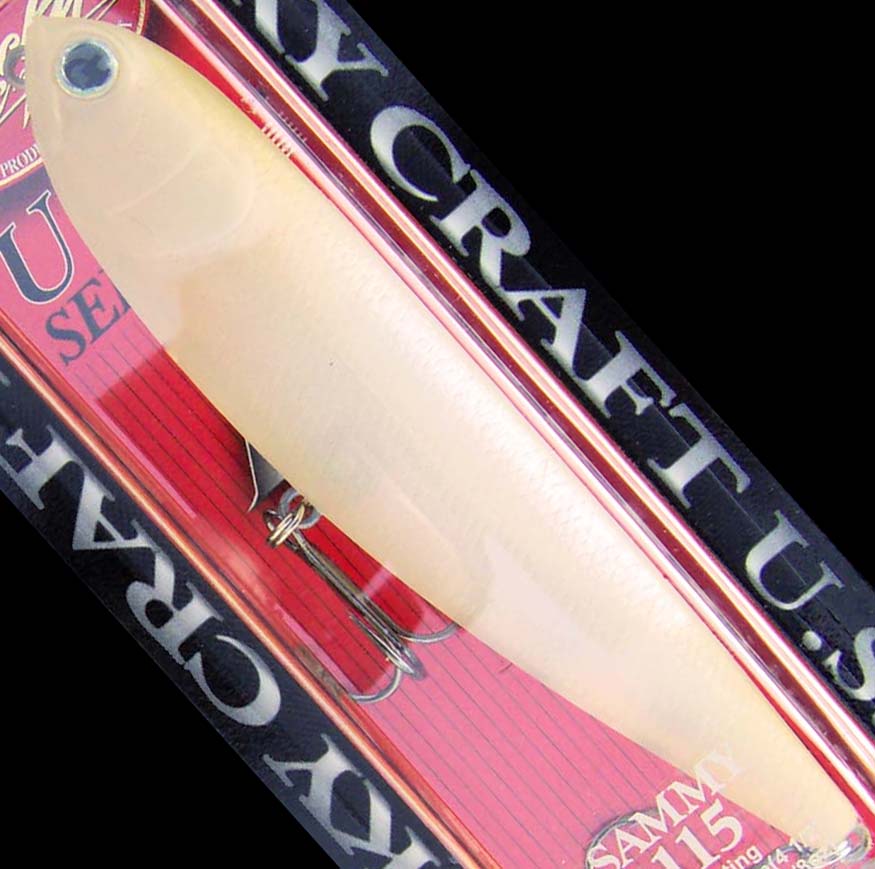
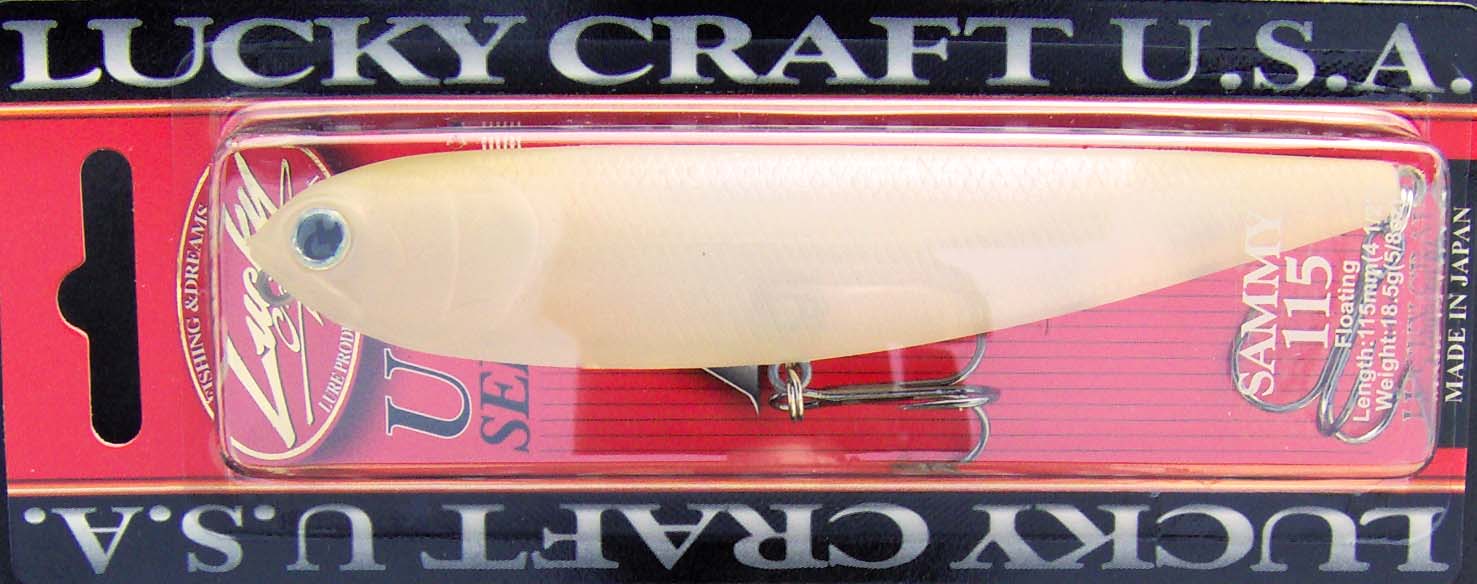
Lucky Craft Sammy 115 ~ Topwater ~ Shell White
|

